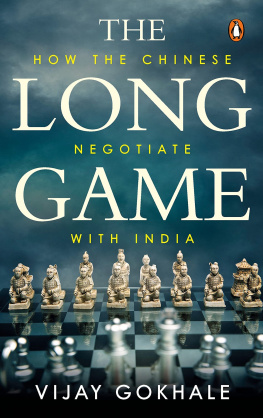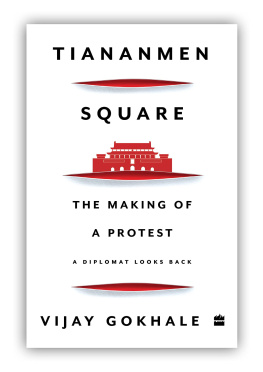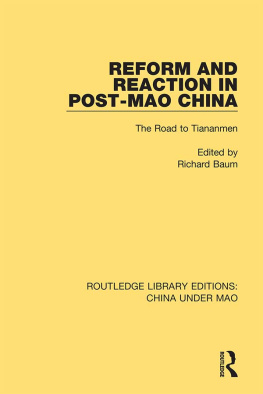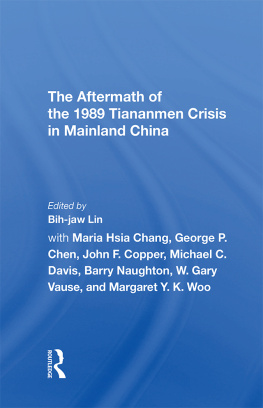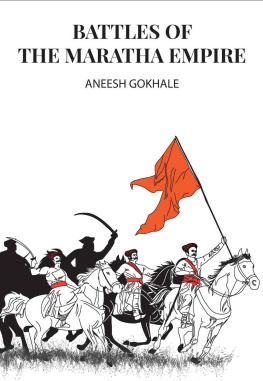Vijay Gokhale - After Tiananmen: The Rise of China
Here you can read online Vijay Gokhale - After Tiananmen: The Rise of China full text of the book (entire story) in english for free. Download pdf and epub, get meaning, cover and reviews about this ebook. year: 2022, publisher: HarperCollins India, genre: Politics. Description of the work, (preface) as well as reviews are available. Best literature library LitArk.com created for fans of good reading and offers a wide selection of genres:
Romance novel
Science fiction
Adventure
Detective
Science
History
Home and family
Prose
Art
Politics
Computer
Non-fiction
Religion
Business
Children
Humor
Choose a favorite category and find really read worthwhile books. Enjoy immersion in the world of imagination, feel the emotions of the characters or learn something new for yourself, make an fascinating discovery.

- Book:After Tiananmen: The Rise of China
- Author:
- Publisher:HarperCollins India
- Genre:
- Year:2022
- Rating:5 / 5
- Favourites:Add to favourites
- Your mark:
- 100
- 1
- 2
- 3
- 4
- 5
After Tiananmen: The Rise of China: summary, description and annotation
We offer to read an annotation, description, summary or preface (depends on what the author of the book "After Tiananmen: The Rise of China" wrote himself). If you haven't found the necessary information about the book — write in the comments, we will try to find it.
After Tiananmen: The Rise of China — read online for free the complete book (whole text) full work
Below is the text of the book, divided by pages. System saving the place of the last page read, allows you to conveniently read the book "After Tiananmen: The Rise of China" online for free, without having to search again every time where you left off. Put a bookmark, and you can go to the page where you finished reading at any time.
Font size:
Interval:
Bookmark:
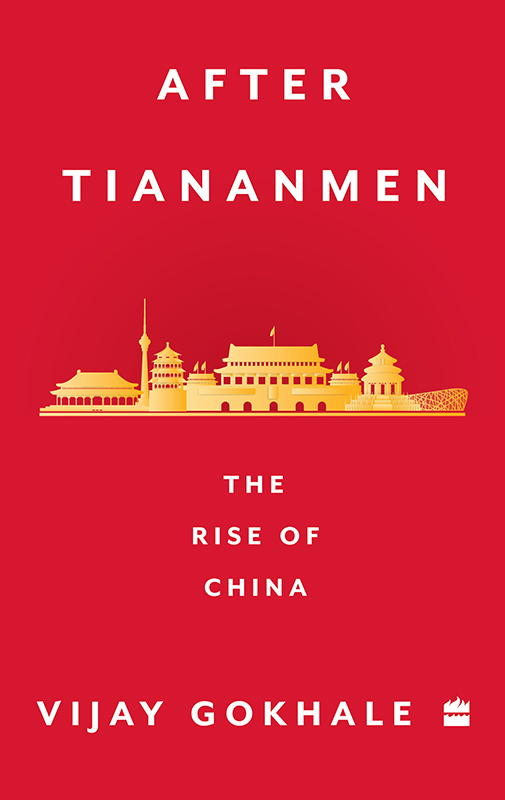

To Jayant and Sonali
Contents
I LEFT CHINA IN 1991 , TWO YEARS AFTER THE TIANANMEN INCIDENT, AND returned for my second stint at the Indian Embassy in Beijing on the day after Deng Xiaopings death in February 1997 . Although I had been away for less than six years, the impact of Dengs economic reforms was already palpable in Beijing as well as in other parts of China to which I subsequently travelled over the next three years. The Tiananmen Incident of 1989 was a closed chapter so far as the Communist Party of China was concerned. If there were any lingering effects globally these could scarcely be discerned from the manner in which China was being wooed by the rest of the world. Dengs demise was condoled by leading international statesmen. President Bill Clinton described him as an extraordinary figure on the world stage. UN Secretary General Kofi Annan called him the primary architect of Chinas modernization. There were, of course, references in the foreign media to the Tiananmen Incident of 1989 but the rich encomiums to Deng testified to the respectable position that China had secured on the world stage less than one decade after 1989 .
For the next twelve years, from 1997 until the end of 2009 , I was to continuously experience China in different capacities. I spent nearly seven years between Beijing and Taipei, and five years on the China desk in New Delhi. I marvelled at how deftly the Chinese Communist Party leadership steered China on a steady course to economic development and growth while maintaining its firm grip on power. India was going through its economic transformation at the time, and comparisons were inevitable. I also discovered that many Indians appeared to have a superficial understanding of Chinas politics, economy and foreign policy between 1990 and 2012 . I hope that this book serves two purposes. First, to paint a picture of what happened in China during the twenty years between Deng Xiaoping and Xi Jinping. Second, to spotlight that it was during this interregnum (from 1992 until 2012 ) that China laid solid foundations of its subsequent rise as a major global power. It is only through a better understanding of how China handled the changes and dealt with the challenges during this period when it was reintegrating with the global community that we, Indians, will be able to develop a proper understanding of todays China.
T HE RISE OF CHINA IS, PERHAPS, THE MOST CONSEQUENTIAL development of the early twenty-first century. Thus, a proper understanding of contemporary China is no longer an academic matter. For an emerging nation like India which is geographically situated on Chinas periphery, understanding its rise has become a matter of national importance. A Western perspective of China may not fully serve the purpose of building awareness and understanding, and greater research and writings by Indians will help in filling the gaps in our understanding of China from the Indian perspective.
My first book, Tiananmen Square: The Making of a Protest, dealt with a defining incident in contemporary Chinese politics, situated in the larger context of the 1980 s, after China emerged from the chaos of the Great Proletarian Cultural Revolution and returned to the more normal pattern of development and international behaviour. In this book, I tell the story of the two decades after the Tiananmen Incident of 1989 , an important but less written-about period in contemporary China. These twenty years were book-ended by the collapse of global communism ( 1989 1991 ) after the end of the Cold War on the one side and the Global Financial Crisis ( 2008 2010 ) on the other side. China was not immune to these developments. In fact, they presented China with fundamental challenges and critical choices to make. This is the story of how some of those choices were made and of who made them, as well as the larger story of how China quietly made its way up the global hierarchy of world power to manifest itself after 2012 as the primary challenger to the United States for world leadership.
The book is not intended to be a detailed factual rendition of China at the turn of the twenty-first century. It is about highlighting some key facets of the China story and addressing some popular misconceptions. It is sometimes felt that after 1992 , China was led by uncharismatic leaders who sailed out on the tide of reforms that Deng Xiaoping had let loose, and somehow muddled through the next two decades until Xi Jinping emerged to lead China to greatness. The stories in this book are intended to establish that it was precisely during these twenty years, before Xi became Chinas president, that China experimented with bold ideas, demonstrated strategic vision, and laid the foundations for the pursuit of global power. It is because of what happened in China between 1990 and 2010 that President Xi Jinping is able to launch his global initiatives and seek Chinese hegemony.
The end of global communism and the fall of the Soviet Union made the Chinese communist state appear, at least for a few years, as if it were under siege from the surrounding democracies. Besides, at home, the Communist Party of China also faced the prospects of a revival of leftism. Deng Xiaoping had officially retired and others were in charge. As Soviet hardliners struggled to rein in the collapsing Soviet Union, their Chinese counterparts tried to steer China away from reform. The first chapter is the story of Survival, of how Deng Xiaoping returned to active politics and overcame one final political challenge to his vision for China through wisdom and patience, and finally through action. It put paid to the myth that reforms in China after 1989 were smooth sailing or inevitable. It is also a reminder that factional rivalry is part and parcel of politics inside the Communist Party of China, and that its apparent invisibility ought not to be confused with non-existence.
The second chapter sheds light on the winding road that China traversed during its economic transformation to becoming the worlds second-largest economy, the largest exporter of merchandise and the largest recipient of foreign direct investment by 2010 . By the end of this period, the world became so dependent on China that it also became the critical engine for growth during the Global Financial Crisis of 2008 . This Quest for Prosperity was not only about good economic policy. It was also about the politics of managing systemic changes in the economy without weakening the Partys grip on power or causing social instability inside China. The choices that China made involved taking risks and showing political will. During this period the leadership coped with entirely new situations such as the insatiable demand for resources to feed the industrial machine. It includes the fascinating story about how Chinas leaders manoeuvred their country into the World Trade Organization scarcely a decade after Western sanctions had been imposed, and how the Western world became willing handmaidens to Chinas rise without realizing its full implications.
The third and fourth chapters of the book titled Playing the West and Wooing the Rest deal with some of the ways and means adopted by the Communist Party to craft a successful foreign policy that returned China to full international respectability within a decade of the Tiananmen Incident. Deeply suspicious of the true intentions of the United States towards communist China after the fall of the Soviet Union in 1991 , the third chapter is the story of how Chinas leaders kept their true feelings hidden for twenty years and humbled themselves before the West in order to secure key foreign policy goals. They created the impression that China might be willing to accept a subordinate position in a Western-led world order in return for securing vast amounts of foreign capital and high technology that benefitted its economy. It also created a legion of international supporters in the rest of the world who pleaded Chinas case in global organizations and with sceptical governments. The fourth chapter tries to identify how China was able to expand its footprint across the world and make significant inroads into almost all the Wests clients and constituencies across the globe by 2010 .
Font size:
Interval:
Bookmark:
Similar books «After Tiananmen: The Rise of China»
Look at similar books to After Tiananmen: The Rise of China. We have selected literature similar in name and meaning in the hope of providing readers with more options to find new, interesting, not yet read works.
Discussion, reviews of the book After Tiananmen: The Rise of China and just readers' own opinions. Leave your comments, write what you think about the work, its meaning or the main characters. Specify what exactly you liked and what you didn't like, and why you think so.

